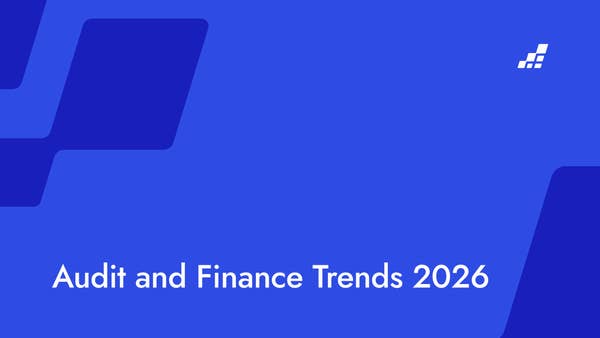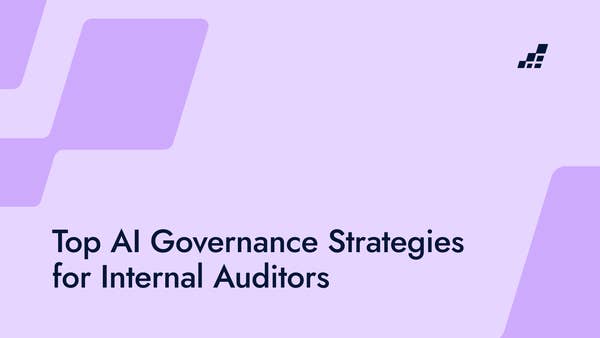- /
- Blog
Understanding Sox Compliance: What You Need to Know

In the U.S., Sox compliance is vital for corporate governance. The Sarbanes-Oxley Act (Sox Act) emerged after scandals like Enron and WorldCom in the early 2000s, emphasizing the importance of transparency and integrity in financial reporting.
Sox compliance ensures ethical practices, accurate financial records, and reliable information for investors. It's not just about following rules; it's about regaining and maintaining trust with shareholders and protecting a company's reputation in the market.
The Role of Sox in Corporate Governance
Sox compliance isn't just about ticking boxes; it's a cornerstone of effective corporate governance. It sets the stage for transparency, accountability, and ethical behavior within organizations, minimizing the risks of fraud and financial misstatements.
Fostering Investor Confidence
Investors are like the backbone of any company, and Sox compliance plays a pivotal role in winning their trust. When companies commit to following Sox regulations, it's not just rule-following; it's about making investors feel secure in their choices. This confidence boost can translate to a higher stock valuation and attract more potential investors.
Informed Decision-Making
Sox compliance isn't just paperwork; it's a game-changer for decision-makers. Accurate and reliable financial information becomes the compass guiding executives and board members. This ensures decisions align with strategic objectives, helping companies spot trends, evaluate performance, and assess risks more effectively.
Protecting Shareholder Interests
Think of Sox compliance as a shield for shareholders. Internal controls and regular audits become the guard dogs, sniffing out and preventing fraudulent activities that could harm investors and stakeholders. This protection builds trust and loyalty, creating a stable business environment.
Building a Robust Governance Structure
Sox compliance isn't a one-time task; it's about building a governance fortress. It encourages effective internal controls, robust risk management processes, and ethical standards. By embedding these practices into the corporate culture, companies set the stage for long-term success and sustainability.
Positive Impact on Reputation
Your reputation matters, and Sox compliance is a reputation booster. When organizations commit to ethical behavior and financial transparency, they earn a badge of integrity and trustworthiness. This reputation not only attracts customers and partners but also helps in recruiting and retaining top talent.
A Foundation for Success
Sox compliance isn't a chore; it's a strategic move. From promoting transparency and accountability to safeguarding shareholder interests, it's a multi-faceted tool for long-term success and sustainability. By making Sox compliance a priority, organizations lay a robust foundation for navigating the complexities of corporate governance.
The Impact of Non-Compliance
Failing to comply with Sox regulations can have severe consequences for organizations.
- Financial Repercussions and Access to Capital: Difficulty accessing capital markets and securing loans for non-compliant companies, with financial institutions and investors hesitant to fund those with a history of non-compliance. This limits company growth and expansion, impacting long-term success.
- Reputational Damage: A Significant Fallout: One of the most significant consequences is the loss of trust and confidence from stakeholders, including customers, investors, and employees. This can have long-lasting effects on the company's brand image, proving challenging to recover from.
- Loss of Investor Confidence: Investors rely on accurate and transparent financial reporting. Failure to comply with Sox increases concerns about the trustworthiness of financial statements, resulting in a decline in the company's stock price and difficulties in raising future capital.
- Legal Penalties: Direct Consequence: Regulatory bodies are authorized to impose fines and penalties, leading to a substantial impact on a company's financial health. In some cases, companies that aren't compliant could face charges which further exacerbate financial and reputational damage.
- Workforce and Ethical Values: Non-compliant companies may lose talented employees, as individuals are often attracted to companies with strong ethical values and a commitment to compliance. This can create a negative work environment which can lead to the issue of talent retention.
- Supplier and Customer Relationships: Suppliers may become hesitant to do business with non-compliant companies, fearing reputational risk. Customers may also lose trust, leading to declining sales and market share.
- Regulatory Scrutiny and Increased Oversight: Regulatory bodies closely monitor companies with a history of non-compliance, resulting in additional reporting requirements and increased costs. This increased scrutiny can create a negative perception among regulators, further damaging the company's reputation.
The Basics of Sox Compliance
Key Provisions of the Sox Act
One of the main outcomes of the Sox Act is the establishment of the Public Company Accounting Oversight Board (PCAOB). The PCAOB is responsible for overseeing the audits of public companies to ensure compliance with Sox requirements.
Another crucial provision is the requirement for internal controls over financial reporting. All organizations "must establish and maintain effective internal control systems to ensure the accuracy and reliability of their financial statements".
Understanding Internal Controls
Organizations put in place internal controls, which encompass processes, policies, and procedures. These measures are created to offer a reasonable level of assurance concerning the accuracy of financial reporting, the efficiency and effectiveness of operations, and adherence to relevant laws and regulations.
Internal controls include, but are not limited to, segregation of duties, proper authorization and approval processes, accurate record-keeping, and regular monitoring and evaluation of controls.
Implementing Sox Compliance in Your Organization
Steps to Achieve Sox Compliance
Achieving Sox compliance involves a methodical approach. To attain and sustain compliance, organizations can follow these steps:
- Assess existing processes and controls
- Identify gaps and areas for enhancement
- Develop and implement suitable controls
- Offer training and education to employees
- Monitor and assess the efficacy of controls
- Conduct regular audits and reviews
Overcoming Common Challenges in Sox Compliance
Implementing and maintaining Sox compliance can be challenging for organizations. Some common challenges include:
- Resource constraints
- Complexity of regulations
- Resistance to change
- Ensuring consistent compliance across multiple locations
To overcome these challenges, organizations can establish a dedicated Sox compliance team, seek external assistance if needed, invest in technology solutions, and promote a culture of compliance throughout the organization.
Maintaining Sox Compliance
Regular Audits and Reviews
Regular audits and reviews are crucial for maintaining Sox compliance. These audits help organizations identify any deviations from established controls, weaknesses in the internal control system, and potential areas of non-compliance.
By conducting audits and reviews, organizations can address issues promptly, take corrective actions, and ensure continuous compliance with Sox requirements.
Training and Education for Continued Compliance
Training and education play a vital role in maintaining Sox compliance. Organizations should provide comprehensive training programs that cover the basics of Sox compliance, internal controls, and the importance of ethical practices.
Continued education should also be emphasized to keep employees up to date with changing regulations and emerging trends in Sox compliance. By investing in training and education, organizations can create a culture of compliance that fosters adherence to Sox requirements.
Adaptive Technology Solutions
Utilizing advanced technology solutions can enhance the efficiency of Sox compliance maintenance. Automation, data analytics, and integrated software systems can streamline processes, facilitate real-time monitoring, and provide valuable insights for decision-making. Incorporating adaptive technology solutions ensures a more agile and responsive approach to Sox compliance management.
Documentation and Recordkeeping
Thorough documentation and recordkeeping are integral to maintaining Sox compliance. Organizations should maintain comprehensive records of internal controls, audit findings, and corrective actions taken. This not only facilitates accountability but also provides a historical perspective that can aid in demonstrating compliance over time.
The Future of Sox Compliance
As technology evolves, we're witnessing some noteworthy trends in Sox compliance that are shaping the landscape:
- Streamlining with Automation: The automation of compliance processes is gaining momentum. Organizations are leveraging technology to simplify and expedite tasks, making the Sox compliance journey more efficient and less resource-intensive.
- Data Analytics for Enhanced Oversight: There's a growing reliance on data analytics to monitor and evaluate controls. By harnessing the power of data, organizations can gain deeper insights, promptly identify anomalies, and strengthen their overall control environment.
- Incorporating Artificial Intelligence in Risk Management: The integration of artificial intelligence is transforming risk assessment and mitigation. AI capabilities are being harnessed to identify potential risks, enabling proactive measures that enhance the organization's resilience to compliance challenges.
These trends aren't just about embracing technology for its own sake; they're strategic moves aimed at making Sox compliance more effective.
By embracing automation, leveraging data analytics, and incorporating AI, organizations aim to not only improve efficiency but also to drive down costs and elevate the overall success of their compliance programs.
How Technology is Changing Sox Compliance
Tech is giving Sox compliance a serious upgrade. Smart software automates processes, monitors controls in real-time, and dives into data analytics, making compliance a breeze with fewer errors.
Plus, it helps us sift through heaps of data, spot trends, and nip risks in the bud. It's not just tech support—it's a game-changer for Sox compliance, making everything sharper and more on point.



.png?width=600&quality=70&format=auto&crop=16%3A9)
